Dallas (214) 340-8885
Athens (903) 677-9090
Gun Barrel City (903) 887-4341
Dallas (214) 340-8885
Athens (903) 677-9090
Gun Barrel City (903) 887-4341
Millions of people are affected by diabetes each year. Diabetes damages blood vessels in all parts of the body, especially the feet. The legs and feet may develop slow blood flow, which causes neuropathy, or nerve damage. Once a diabetic patient develops neuropathy, it is important that the feet are well taken care of. Otherwise, the lower limbs may have to be amputated. This only happens in drastic cases, but it shows how seriously diabetic foot care should be taken.
It is very important to always wash and dry the feet thoroughly, especially in between the toes, if you’re a diabetic. Secondly, examining your feet and toes for redness or sores must be done, even if you do not feel pain. You may also want to examine your feet from the bottom. Try to avoid wearing colored socks to prevent infections that may occur from the dye. Well-fitting socks are also highly recommended.
A diabetic’s physician should always monitor their blood levels to test how well blood sugars are being maintained. In addition to giving advice about everyday eating habits and foot care, a physician may prescribe medicine to help with the diabetic patient’s neuropathy. It is also advised to see a podiatrist if experiencing any feet conditions. Toenails may also need to be taken care of by a podiatrist. This prevents patients from cutting too deeply around their cuticles, which can lead to infection.
A person can take care of their feet at home by following the instructions of their physician. Using creams on one’s feet is also an effective way to heal dryness. Proceed with caution when using tools to remove calluses, as severe diabetics may not be able to feel pain on their feet. If any complications arise do not hesitate to contact a podiatrist.
On a daily basis, diabetic feet must be checked. If you are ever concerned about something, contact your health care professional. You never want to wait until a wound becomes too severe to treat. If left untreated, gangrene may develop. Gangrene is a serious infection that can lead to sepsis or amputation. It is also important for diabetics to be on the lookout for ulcers. Ulcers are sores that develop from tissue loss on the skin. They can be quite painful and require intensive treatment. Early treatment and everyday inspection are imperative to staying healthy.
 Foot problems may become more severe if you are a diabetic, and additional care must be taken to avoid complications. There are several techniques that can be practiced for optimum foot care, including checking the feet daily for any cuts or redness, cutting the toenails correctly, and washing and drying thoroughly between the toes. If the skin becomes hardened, you may consider applying a moisturizer on the top and bottom of the feet which will promote softer skin. Choosing to wear shoes that fit well will not only feel comfortable, but will be beneficial in avoiding conditions that may lead to sores and infections. When buying shoes, it’s important to make sure the toes have adequate room to move around, and choosing a shoe with a lower heel may be helpful to avoid falling. It is of vital importance that daily foot inspections be carried out. Any type of wound, especially one that is not healing, must be addressed with immediate attention. A consultation with a podiatrist is advised to learn about the importance of proper diabetic foot care.
Foot problems may become more severe if you are a diabetic, and additional care must be taken to avoid complications. There are several techniques that can be practiced for optimum foot care, including checking the feet daily for any cuts or redness, cutting the toenails correctly, and washing and drying thoroughly between the toes. If the skin becomes hardened, you may consider applying a moisturizer on the top and bottom of the feet which will promote softer skin. Choosing to wear shoes that fit well will not only feel comfortable, but will be beneficial in avoiding conditions that may lead to sores and infections. When buying shoes, it’s important to make sure the toes have adequate room to move around, and choosing a shoe with a lower heel may be helpful to avoid falling. It is of vital importance that daily foot inspections be carried out. Any type of wound, especially one that is not healing, must be addressed with immediate attention. A consultation with a podiatrist is advised to learn about the importance of proper diabetic foot care.
Diabetic foot care is important in preventing foot ailments such as ulcers. If you are suffering from diabetes or have any other concerns about your feet, contact Dr. Jonathan Kletz from Texas Foot Works. Our doctor can provide the care you need to keep you pain-free and on your feet.
Diabetic Foot Care
Diabetes affects millions of people every year. The condition can damage blood vessels in many parts of the body, especially the feet. Because of this, taking care of your feet is essential if you have diabetes, and having a podiatrist help monitor your foot health is highly recommended.
The Importance of Caring for Your Feet
Patients with diabetes should have their doctor monitor their blood levels, as blood sugar levels play such a huge role in diabetic care. Monitoring these levels on a regular basis is highly advised.
It is always best to inform your healthcare professional of any concerns you may have regarding your feet, especially for diabetic patients. Early treatment and routine foot examinations are keys to maintaining proper health, especially because severe complications can arise if proper treatment is not applied.
If you have any questions please feel free to contact one of our our offices located in Dallas, Athens, and Gun Barrel City, TX . We offer the newest diagnostic and treatment technologies for all your foot and ankle needs.

It’s not easy to stay active when you have a foot or ankle injury. Most exercises you can do at home or at the gym usually involve the feet and ankles, so you may feel discouraged from physical activity. For some of you, you might be happy to have an “excuse” to not participate in exercise!
Sorry to burst your bubble, but there are alternative exercises you can try. We encourage you to keep active because it can increase circulation and promote faster recovery, as long as you allow your foot or ankle injury to rest and heal.
If your injury is not severe and you can still move your foot or ankle in low-impact exercises, try the following:
If you cannot put any weight on the feet or ankles, try some of the following:
Before starting a new workout regimen, be sure to check with our podiatrist, Dr. Jonathan M. Kletz for a proper assessment. Make an appointment today at any of our Abrams (Dallas), Athens, and Gun Barrell City, TX offices so that we can help you stay active and get back on your feet!
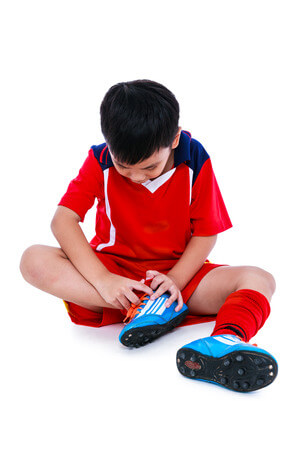
When it comes to your children, they shouldn’t feel pain on their feet. If they complain about pain, it usually indicates an injury or issue that should be addressed.
One of the more common complaints of pain for children is heel pain – especially if they are physically active. There are a few reasons why your child might experience heel pain, including: Sever’s Disease (Calcaneal Apophysitis), plantar fasciitis, heel spurs, Achilles tendonitis, and even fractures.
Heel pain due to Sever’s Disease. For children (between the ages of 8 to 15) with growing feet, Sever’s disease tends to be a common reason for heel pain. Usually aggravated by an injury or other repetitive impact (e.g. jumping or running in cleats), heel pain is caused by a tight Achilles tendon that pulls on the heel growth plate, which has not yet solidified. The repeated tight pulling or an injury can cause inflammation, tenderness, and pain in the rear of the heel bone.
Assessment of symptoms. A podiatrist can usually diagnose Sever’s disease by performing an assessment of the heel bone, which includes squeezing the sides of the heel. If that causes pain, it is an indication that your child might be suffering from this problem. At home, you’ll want to pay attention to your young athlete’s feet. Check for any signs of limping as that could indicate that your child is trying to ignore the pain.
Treatment of Sever’s disease. For mild cases, pain from Sever’s disease can resolve on its own as the bone hardens. If the pain is not persistent and extreme, rest and applying a cold compress can help to reduce pain and inflammation. If your child is in the middle of a season or tournament, be sure to use heel cups or orthotics, as well as stretching exercises to help prevent worsening symptoms.
For more intense pain, your child should rest the foot and not participate in sports for a couple of weeks. The heel bone may even benefit from immobilization in a boot. If your child continues to play sports, it may cause further problems that require more treatment.
Make an appointment. Do you suspect Sever’s disease to be the reason why your child is complaining of heel pain? Come see our podiatrist, Dr. Jonathan M. Kletz for a proper assessment and appropriate treatment. Make an appointment today at any of our Texas offices in Abrams (Dallas), Athens, and Gun Barrell City so that we can help your child get back on his or her feet!
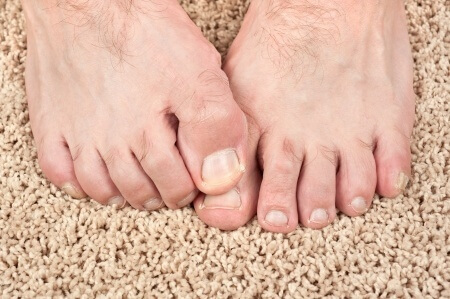
Who can be affected by fungal toenails?
The fungus can infect anyone with toenails. Those with weak immune systems are less likely to be able to fight it off.
What is it?
Fungal toenails, or Onychomycosis, is a fungal infection that is caused by the same fungus tinea that results in athlete’s foot, jock itch, and ringworm. It can cause toenails to become thick, hard, yellow or gray, and brittle. They are contagious and can be unsightly.
When are you most likely to be affected?
Fungal toenails can arise when the fungus enters the skin and nails through cuts, scrapes, and/or when people have weakened immune systems. Any wounds should be treated promptly to prevent fungal, viral, and bacterial infections. Those who are sick, have poor circulation, have diabetes, or have skin conditions like eczema or psoriasis are more at risk of being affected by fungal toenails and athlete’s foot.
Where did you get it?
The tinea fungus grows in dark, damp, and warm places, such as in shoes, locker room floors, communal showers, and shared towels or toenail clippers.
Why is it important to treat?
Not only do they affect your toenail health, making them more prone to breaking, they are also embarrassing and unsightly. Additionally, you can spread them to family or other members of your gym if you fail to keep up hygienic practices, such as wearing protective footwear in communal areas and not sharing towels.
How do you treat it?
Depending on how long you’ve had the condition and how severe it is, treatment options include:
Hyperblue Laser therapy at our office (several painless treatments with no recovery period)
Are you sick of battling with fungal toenails? Come see our podiatrist, Dr. Jonathan M. Kletz for prompt treatment. Make an appointment today at any of our Abrams (Dallas), Athens, and Gun Barrell City, TX offices so that we can help you regain your nail health!
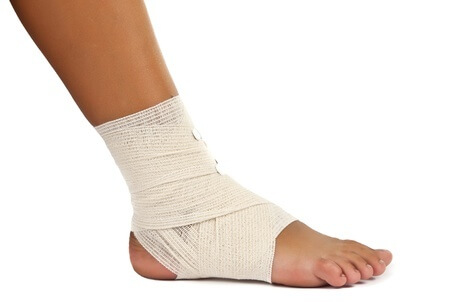
No, we are not talking about the grain, but rather, the RICE method. The letters R, I, C, and E in RICE methodstand for: Rest, Ice, Compression, and Elevation. After a foot or ankle injury, applying the RICE method can help to relieve pain and swelling symptoms. It is used until the injury heals, or if symptoms do not get better, until you can be seen by a medical professional for further treatment.
Please note: For severe injuries, especially if you suspect a broken bone or torn ligament, you should seek prompt medical attention at urgent care or the emergency department.
For mild or moderate injuries, such as a bruise from a heavy object or a sprained ankle, or even pain from overuse injuries like Achilles tendonitis or Plantar fasciitis, the RICE method can be very effective. Read on for a more detailed description of each of the components of the RICE method:
“R” is for “Rest” - Stop what you are doing. Whether it is playing a sport, walking to work, or jogging in the park, you should immediately stop and assess your injured foot or ankle. If possible, do not put weight on it and if necessary, sit down to prevent further injury.
This can also apply to resting from the activity you are doing to allow your injury to fully heal. If you were playing a sport, you may have to sit out the rest of the game, or the season to fully “rest” your foot or ankle. If you are a ballet dancer, it may mean missing the next performance or more. Look at it this way: it’s better to miss a little now, than to risk not being able to do it at all.
“I” is for “Ice” - Apply a cold compress or ice on the injured are for 15 to 20 minutes at a time. This will prevent or reduce swelling and numb some of the pain.
“C” is for “Compression” - To promote healing and reduce or prevent swelling, you can use compression socks or bandages on the injured area. Even after a few hours, you can use compression to support your injured leg until it heals.
“E” is for “Elevation” - Whenever possible, keep your injury elevated above heart level (or at least level to your hip when you are sitting). This will also prevent or reduce swelling to the injured area.
Have you experienced an injury that won’t get better within a couple days? You should consult with our podiatrist, Dr. Jonathan M. Kletz, at Texas Foot Works. He will assess your foot or ankle injury to get you the right treatment. Make an appointment today at our offices located in Abrams (Dallas), Athens, and Gun Barrell City, TX!
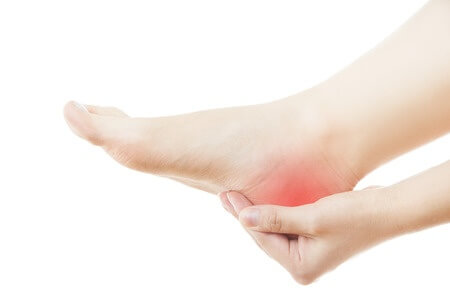
For most, plantar fasciitis pain comes on gradually. Your plantar fascia (fibrous tissue along the bottom of the feet) helps you stay mobile and connects the balls of the feet to your heel bone. Repetitive movements often required in sports or certain jobs can make it become inflamed.
If you notice that the bottom of your feet feel sore or tight, try one or more of the following 10 home remedies to prevent the pain from getting worse:
If your plantar fasciitis pain does not get better after trying some of these home treatments, consult with our podiatrist, Dr. Jonathan M. Kletz, at Texas Foot Works. Our foot doctor will assess your feet to get you the right treatment. Make an appointment today at any of our offices in Abrams (Dallas), Athens, and Gun Barrell City!
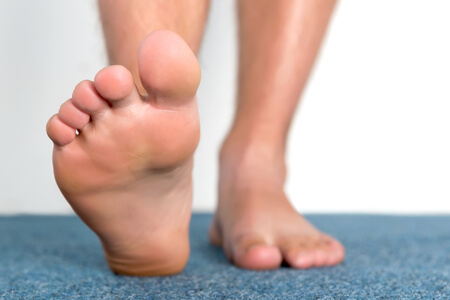
Osteoporosis, a disease in which your bones slowly lose more calcium than it absorbs, is usually thought of as a disease that your grandparents get and suffer from. And for the most part, that’s true. However, those with early onset osteoporosis can be diagnosed even before the more typical age of 50 years old.
The good news is that it can be prevented or slowed with good nutrition and strength training exercises. Even after diagnosis, medications are available that may help slow the bone loss process and even restart bone building.
How do your feet come into play?
Don’t forget, each foot is made of 26 bones, which means that the feet account for about a quarter of the all the bones in the body. This means that osteoporosis, a systemic disease of the bones, is likely to affect your feet and ankles.
Since your feet have to bear the weight of your entire body, that puts more pressure on them as they endure impact on the ground. The feet and ankles are more likely to experience:
In fact, the bones can become so brittle that when you go in for a checkup on pain, redness, and swelling on your feet, our podiatrist may detect a fracture, and also determine that you may have osteoporosis. That’s right, some people find out they have osteoporosis because of a foot fracture!
What can you do to reduce risks
Do you or someone in your family have osteoporosis? It may be passed down genetically, so consult with our podiatrist, Dr. Jonathan M. Kletz, at Texas Foot Works. He will assess your feet to get you the right diagnosis so that you can get the appropriate treatment. Make an appointment today at any of our Abrams (Dallas), Athens, and Gun Barrell City, TX offices!
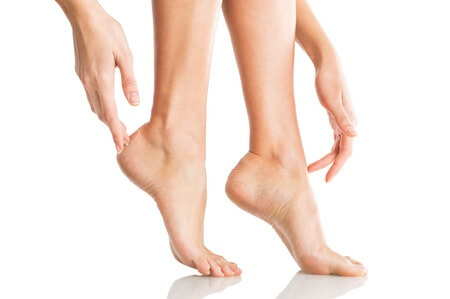
Did you know that diabetes can affect not only your blood sugar levels, but can also be damaging to your kidneys, eyes, nerves, and feet? In fact, for those who do not have severe symptoms, losing feeling in the feet can be the first sign of diabetes. After an assessment by a podiatrist or other medical professional, patients with this condition, known as neuropathy, in the feet can eventually be diagnosed with diabetes.
Unfortunately, it doesn’t stop there. Neuropathy is a result of nerve damage due to high levels of blood sugar. It can have effects beyond a loss of sensation – it can lead to reduced circulation and healing, because your body can no longer communicate properly to serve your feet’s needs. The smallest cuts or injuries can become larger issues, such as ulcers. That’s why it’s important to take care of your feet, whether or not you have diabetes. After all, about 10% of the US population has diabetes (including those who are not yet diagnosed).
The following are diabetic foot exam steps that you can perform on your own. It can help you to find signs of diabetes-related foot problems that you can treat sooner, rather than later. If you have already lost sensation in your feet, be sure to check your feet daily:
Foot care for diabetics is very important. If you notice any changes in your feet, consult with our podiatrist, Dr. Jonathan M. Kletz, at Texas Foot Works right away. He will assess your feet and ankles to see what treatment you may need. Since an unnoticed problem can become way worse and more difficult to treat, it’s important that you make an appointment today at any of our offices in Abrams (Dallas), Athens, and Gun Barrell City, TX!
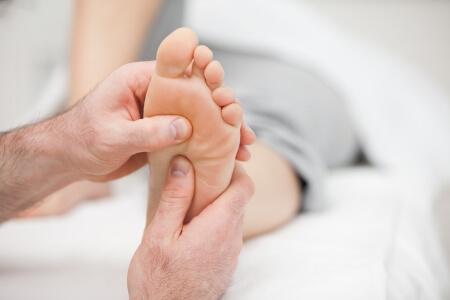
In many cases of acute injuries, as well as with chronic pain symptoms, podiatrists will often prescribe orthoticsas part of rehabilitation or pain management. Depending on the reason for prescribing orthotics, they can be useful for prevention of future problems (e.g. when used for children), immobilizing injuries to prevent worsening symptoms (e.g. after foot or ankle surgery), and for treating painful symptoms of foot or ankle deformities.
There are generally two types of orthotics that our foot doctor will prescribe: accommodative foot orthoses and functional foot orthoses.
Accommodative orthotics are:
Functional orthotics are:
Both are created by taking a mold of your feet and/or ankles using plaster or foam. Mechanical or optical scanners can also help to take measurements for an accurate fit. This process takes place during an office visit, taking into consideration your footprint, gait, and any inflammation or deformity in the feet or ankles. The end goal is to either relieve symptoms so that you can resume normal activities without pain, or to deter/correct a deformity that can keep getting worse.
For additional questions regarding how orthotics can help your foot or ankle pain, consult with our podiatrist, Dr. Jonathan M. Kletz, at Texas Foot Works. He will assess your feet and ankles to see if orthotics will work for you. Make an appointment today at any of our Abrams (Dallas), Athens, and Gun Barrell City, TX offices!